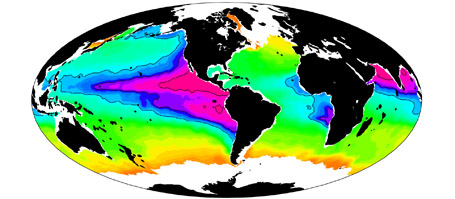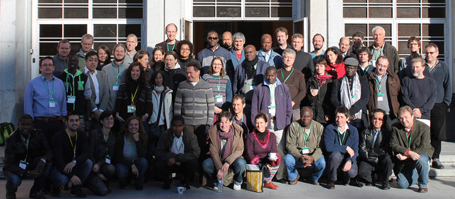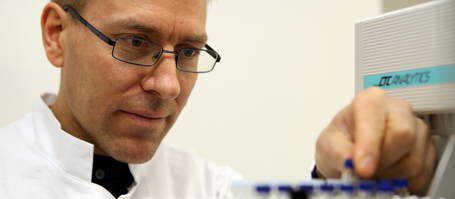Joint press release of the Kiel Cluster of Excellence "The Future Ocean" and the GEOMAR Helmholtz Centre for Ocean Research
Without nitrogen as fertilizer und its conversion products, phytoplankton could not exist in the sea. It could not bind carbon dioxide and would not produce oxygen. And it would leave the food chain without a basis. However, too much nitrogen would be a catastrophe for the marine ecosystem. Plankton would grow in such a large amount that the consequent decomposition of organic matter would consume enormous amounts of oxygen. Thus large areas of the sea floor would be depleted of oxygen and the habitat for fish and other marine organisms would be destroyed. The present equilibrium sustains bacteria that fixate nitrogen from the atmosphere and store it close to the oxygen-rich surface.
The equilibrium is impaired when more nitrogen enters the seas, for example through fertilizer for industrial agriculture. Simultaneously, humans are warming not only the Earth system but also the ocean by releasing large quantities of carbon dioxide into the atmosphere. Both activities can change the oceanic nitrogen cycle. Despite the immense importance of the nitrogen cycle for all life in the ocean, there is no reliable scientific data on how this cycle will react to exterior pressure.
Together with their international colleagues, Kiel scientists from the Collaborative Research Centre 754 “Climate - Biogeochemistry Interactions in the Tropical Ocean” have reconstructed how the nitrogen cycle reacted to extreme conditions at the end of the ice age. For their study the scientists used the planet’s largest climate archive – the sea bed. When the phytoplankton, which accumulates nitrogen, dies it sinks to the sea bed and collects. Over centuries individual layers build up which provide information on the environmental conditions during the time of their formation. Previous studies on the topic were restricted regionally. “Therefore, for the first time, we have gathered the results of many research groups that work in this field,” explains Professor Ralph Schneider, one of the authors and director of the Institute of Geosciences at Kiel University. “We have compared approximately 2,300 sediment cores from the end of the ice age from all oceans and developed 76 time series from nitrogen isotopes of the past 30,000 years.”
From this data the researchers can say that the ocean’s chemical state was able to stabilize after only a few thousand years during the natural climate change following the ice age. “This unique data record is a significant basis for computer simulations with which we can estimate how fast the nitrogen cycle will react to the present climate change,” adds coauthor Christopher Somes from GEOMAR Helmholtz Centre for Ocean Research Kiel.
The study shows that the intensity of the process, in which ocean bound nitrogen is released and can enter the atmosphere, strongly increased at the end of the last ice age, while the parts of the ocean with little light became considerably lower in oxygen. The ecosystem had to adapt to the changed conditions. When the ice sheets withdrew approximately 8,000 years ago, the ocean stabilized in a new, warmer state in which the nitrogen cycle ran faster than during the ice age.
“Today’s influences on the ocean are probably more severe than during the end of the ice age. A new equilibrium will be reached maybe in a few centuries or even in a few millennia,” predicts Professor Ralph Schneider. “Thus the question of how the ocean will cope with comparatively fast, human-induced climate change and how dramatically local ecosystems will have to adapt is still unanswered,” continues Ralph Schneider.
Original work:
Galbraith, E.D., Markus Kienast & The NICOPP working group members (2013): The acceleration of oceanic denitrification during deglacial warming. Nature Geoscience, published online 02 June 2013, http://dx.doi.org/10.1038/ngeo1832
Contact:
Prof. Dr. Ralph Schneider (Institute of Geosciences, Christian-Albrechts-University Kiel)
schneider@gpi.uni-kiel.de
Links:
www.geomar.de GEOMAR Helmholtz Centre for Ocean Research
www.sfb754.de Sonderforschungsbereich 754 (Collaborative Research Centre 754)
www.ifg.uni-kiel.de Institute of Geosciences, Kiel University
…



